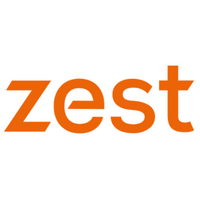Is technology enhancing or hindering your workforce?

There is no silver bullet to resolve this but there are things you can do and look at in your organisation to assess whether the technology you are using, and how you are using it, is aiding employee productivity or is actually a hinderance. Let’s consider some of the factors involved.
1. Too many ‘helpful’ systems that aren’t integrated well
If you count the number of products/technologies that your employees use to complete their jobs and manage their work life, you’ll probably be surprised by the figure you reach. Just in HR, that could include HR systems to book holidays, an intranet to find out company policies, payroll systems for online payslips, an employee survey tool to give feedback, a reward and recognition system, a performance appraisal system, a benefit selection system and others. Adding on standard computer software such as MS office or Google docs, email applications, messaging tools like Skype and collaboration tools like Slack or Teams. Lastly, and this will depend on the type of work people do, you’ll have specific applications that help your employees manage and complete their tasks, CRM systems (Salesforce, Zendesk), planning (MS Project, Trello), and your own unique work specific products.
These technologies have exploded over recent years, but how do all these interact with each other? Is there an overlap, are there gaps between them, how many different log-ins are needed? With so many systems to grasp we are adding to a cognitive overload for employees – who also have dozens of apps to handle in their personal lives.
2. Poor user experience and the wrong technology
“Take care of your employees and they’ll take care of your business” is a quote attributed to Virgin founder Richard Branson. This shift of focus from customer experience to employee experience, with the ultimate outcome of happier customers, applies to the systems and technology they are using as well. And this ranges from the systems your help centre or delivery drivers use, through to operating a warship.
The BBC recently reported on how the US Navy is to ditch touchscreen ship controls after it was found that they had contributed to crashes and deaths. It is an extreme example of the effect making poor choices on technology can have, but the issue impacts everyone daily on a more prosaic level. Think about the amount of times you’ve had to wait on a call whilst ‘the system boots up.’ Multiply that by thousands of calls a day and the lost productivity is significant.
Furthermore, as well as delivering a poor customer and employee experience, having below par and outdated technology can be a security risk; as the NHS found out a few years ago when the vulnerabilities of using an outdated IT system and the WannaCry virus were exposed.
3. Fight for attention – being able to focus on value added work
Ironically, some of the technology we have can be too good and, as described by Nir Eyal, even addictive as it’s actually been designed to provide a small dopamine hit to get you hooked. Smartphones with their various apps have amplified this, but one of the biggest work disruptors is the trusty old email. Conditioned like Pavlov’s dogs, the notification to tell us of a new arrival acts as a distraction, dragging us away from work we need to focus on. Add your phone and myriad collaboration tools into the mix and you can spend the whole day reacting to other people’s needs rather than focusing on getting your own value added work done. The struggle to keep on top of all these methods of communication and the temptation to be distracted by the likes of Twitter is something that we need to learn to adjust to.
So, what can we do?
Assess your technology eco-system and strategy
Take a step back and think about what the employee experience of using technology in your company is. The consumer experience is what employees expect from their work experience as well. Think about different scenarios including experienced or more junior new starters, long serving or senior employees and people spread out in different parts of the organisation.
Start with your HR-related systems and assess if they really are delivering a good employee experience. Where is time lost? How do the systems interact? Take your time to come up with a cohesive strategy and look at the market and how it’s changed, be that HR, payroll or benefits systems.
Push your providers but don’t make it too bespoke
Off the shelf products are good but never quite meet your needs and can lead to workarounds and a poor experience. However, getting a provider to completely bespoke a system for you is a recipe for disaster and will be time consuming and costly, year after year. What you want to look for is a product that has enough flexibility to meet most of your needs and then rethink your processes so you don’t need workarounds or bespoke solutions.
Forward thinking software suppliers are aware of the need for flexibility built into their software offering to cater for their client’s different needs. Your providers should be constantly developing their products to keep improving the solution so understanding their roadmap is time well spent.
Provide guidelines, training and the right culture
The ‘always on’ smartphone culture has permeated into the world of work and can lead employees to feel they need to respond 24/7. This becomes part of your culture before you know it and productivity is then seen as how many and how quickly you can respond to messages rather than any actual valuable output.
It seems a little churlish, but having some guidelines on communication, what is expected from email, collaboration tools etc. can help. Helping people work out the best communication method depending on urgency; and telling people it is ok to set aside an hour, twice a day to read and respond to emails and messaging tools, allows people to understand it is ok to plan their day in this manner. The result being your employees getting value added work done with fewer distractions.
Where to now?
With the likes of the World Economic Forum saying we are witnessing the fourth industrial revolution, without doubt technology will keep evolving. Leading this charge will be major influencers such as machine learning and AI. And one thing is certain, it will keep changing at pace and things are only going to get more complex and challenging.
Make technology as straightforward and rewarding as possible for everyone, set some ground rules and spend some quality time researching just what you want technology to do and how best to manage it.
The author is Alistair Dunn-Coleman, head of product, Zest Technology Ltd.
This article is provided by Zest Technology Ltd.
In partnership with Zest
Zest is the next generation platform that’s reinventing the world of employee benefits.







